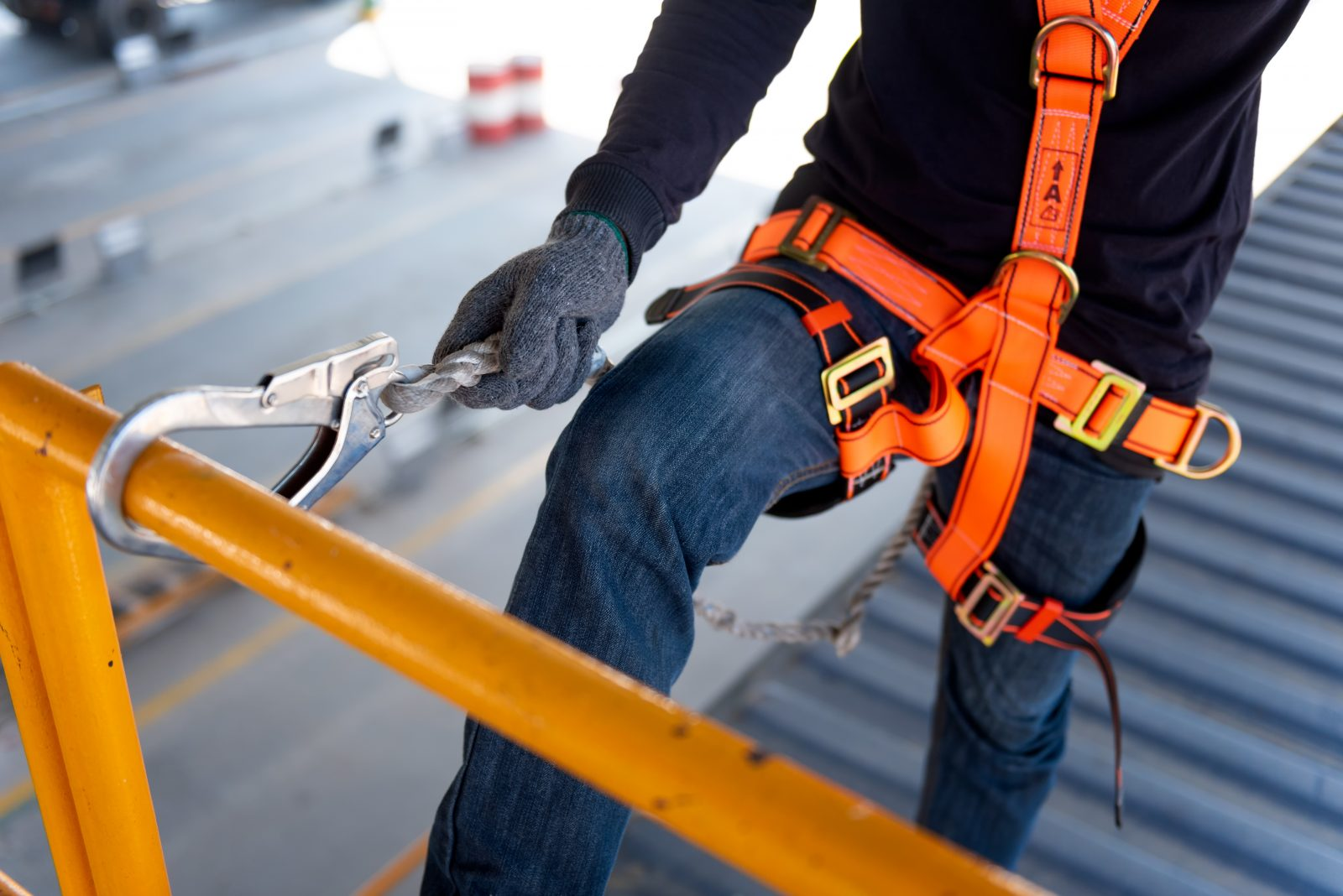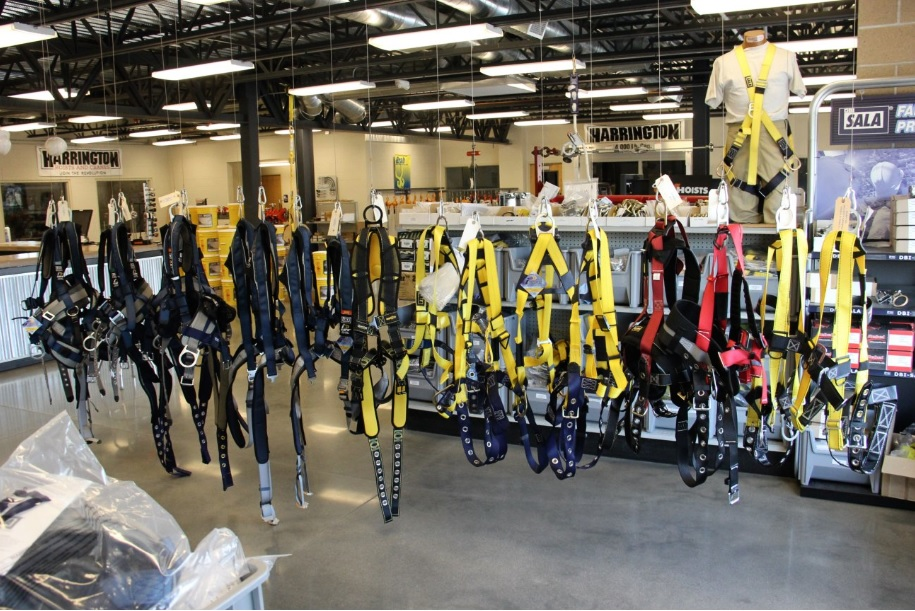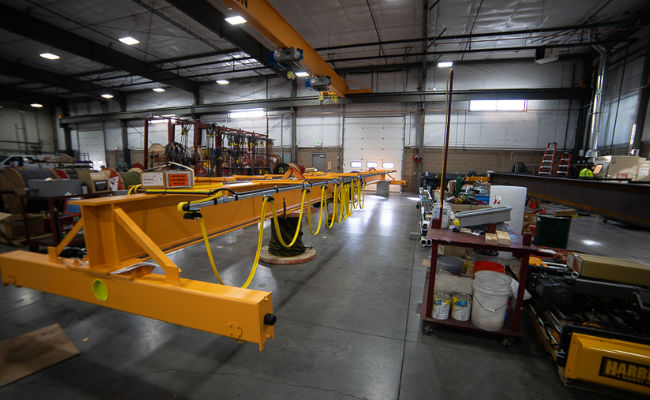Top-Rated Idaho Rigging Supplier Provides Hoists, Cranes, Fall Protection Equipment
Workers are often required to work at elevated heights, such as on ladders, scaffolds, or raised platforms. This makes fall protection essential in material-handling operations.
Implementing proper fall protection measures from a reputable company like Boise Rigging means your workers can work at heights safely and efficiently, minimizing the risk of injury and creating a safer work environment.
They are an Idaho hoist and crane supplier that provides solutions for fall protection needs. Employers can improve worker morale and reduce the risk of costly lawsuits resulting from workplace injuries.
Find the perfect cable railing for your home or business

What is Fall Protection?
Fall protection is a set of safety measures and equipment designed to protect workers from falling while working at heights. They are also efficient for confined spaces.
How Boise Rigging Can Keep Your Workers Safe
Boise Rigging keeps workers safe by reducing the risk of falls and minimizing the impact of falls if they occur. Their services involve a combination of equipment and procedures that prevent falls and protect workers who are working at heights.
Types of fall protection equipment
Fall protection equipment is designed to protect workers at risk of falling from heights while working at elevated locations. Below are some of the types of fall protection products available.
Anchor Points
An anchor point is a fixed or portable device that provides a secure attachment point for fall protection equipment. Many types of anchor points are available, such as roof anchors, wall anchors, portable anchors, and horizontal and self-retracting lifelines.
They can either be fixed, mobile, or temporary. Anchor points are typically used with other fall protection equipment, such as lanyards and harnesses.
Benefits of different types of fall protection anchor points:
- Fixed anchor points provide a secure and cost-effective solution for fall protection.
- Mobile anchor points offer flexibility and is movable from one location to another.
- Temporary anchor points are ideal for short-term projects and can be removed once completed.
- Horizontal lifelines protect workers who need to move horizontally along a surface.
- Self-retracting lifelines offer continuous fall protection while reducing the risk of tripping or getting tangled in the lifeline.
Safety Harnesses
A safety harness is personal protective equipment that workers wear when working at heights. A safety harness typically includes straps around the worker’s shoulders, chest, and legs. It is connected to a central point where you can attach a lanyard or other fall protection equipment.
Types of safety harnesses include:
- Full-body harness
- Construction-style harness
- Suspension harness
- Retrieval harness
- Climbing harness
The benefits of fall protection harnesses include:
- Preventing falls.
- Reducing the risk of injury or death.
- Ensuring compliance with safety regulations.
Choosing the right harness for the job is critical to ensuring worker safety and reducing the risk of accidents.
SHOP TOOLS & SAFETY GEAR
Lanyards
A lanyard is a rope or strap that connects a worker’s safety harness to an anchor point. Lanyards can be made from various materials, including nylon, polyester, and wire rope. The types of lanyards are as follows:
- Shock-absorbing lanyards
- Self-retracting lanyards
- Restraint lanyards
- Adjustable lanyards
The choice of fall protection lanyard will depend on the specific requirements of the job and the environment in which the users perform. Employers must ensure that the lanyard is appropriate for the job, is in good condition, and that the worker uses it correctly.
Self-Retracting Lifelines
A self-retracting lifeline is fall protection equipment with a design to retract the lifeline as the worker moves automatically. Self-retracting lifelines are typically used when workers need to move around while working at heights.
Guardrails
A guardrail is a barrier that prevents falls from high locations. Guardrails are typically made from steel, aluminum, or plastic and are designed to withstand significant force.
Safety Nets
Safety nets are typically made from nylon or polypropylene and catch workers who fall from high locations. Workers often use safety nets in construction sites and other areas where workers can fall from heights.
Roofing Harness Kits
A roofing harness kit is a specialized type of safety harness that is designed specifically for use by workers who are working on rooftops. Roofing harness kits typically include a harness, lanyard, and roof anchors.
Hoists and Cranes

Hoists and cranes are essential equipment in materials handling operations. They are critical in safely and efficiently moving heavy materials and equipment.
Types of Hoists and Cranes
Electric chain hoists
Electric chain hoists are motorized lifting devices that use a chain to lift and move heavy loads vertically.
Wire rope hoists
Wire rope hoists are like electric chain hoists but use a wire rope instead of a chain.
Jib cranes
Jib cranes comprise a vertical mast, a horizontal jib or boom, and a hoist or lifting mechanism.
Gantry cranes
Gantry cranes have a horizontal beam supported by two or more legs that run on wheels or rails.
Bridge cranes
Bridge cranes are overhead cranes with a horizontal beam that runs along two rails mounted on either side of a workspace.
Each type of lifting equipment has unique features and benefits, making them suitable for different applications and industries.
Benefits of Using Boise Rigging’s Products

Using their equipment will also reduce costs associated with workplace injuries, such as medical expenses, workers’ compensation claims, and lost productivity.
Boise Rigging equipment can help workers focus on tasks and improve productivity by providing a secure and safe working environment. They offer the best fall protection service in Idaho, and they have full commitment to the safety of workers.
How to Choose the Right Equipment
Selecting the appropriate equipment for specific materials handling operations requires careful consideration of the requirements, options, cost, safety, and training.
Boise Rigging offers professional advice and educational resources on fall protection. This helps businesses make informed decisions when selecting appropriate equipment for their needs.
The Occupational Safety and Health Administration (OSHA) noted that falls accounted for 401 out of 1,089 fatalities among construction workers in the United States in 2020. This is approximately 37% of all construction worker deaths.
Conclusion
Fall protection, hoists, and cranes are crucial for materials handling operations to ensure worker safety and improve efficiency.
Moreover, Boise Rigging provides expert consultation and education on fall protection and supplies high-quality products to meet the specific needs of businesses.
By selecting the right equipment, they can keep workers safe, increase productivity, and reduce costs. Visit Boise Rigging to purchase equipment and help select the right products to safeguard your workers and business operations.
They boast an extensive inventory, with three convenient locations. They also allow customers to test any fall protection equipment before purchase. Finally, they offer expert consultation and guidance to ensure prospective clients make informed decisions.

